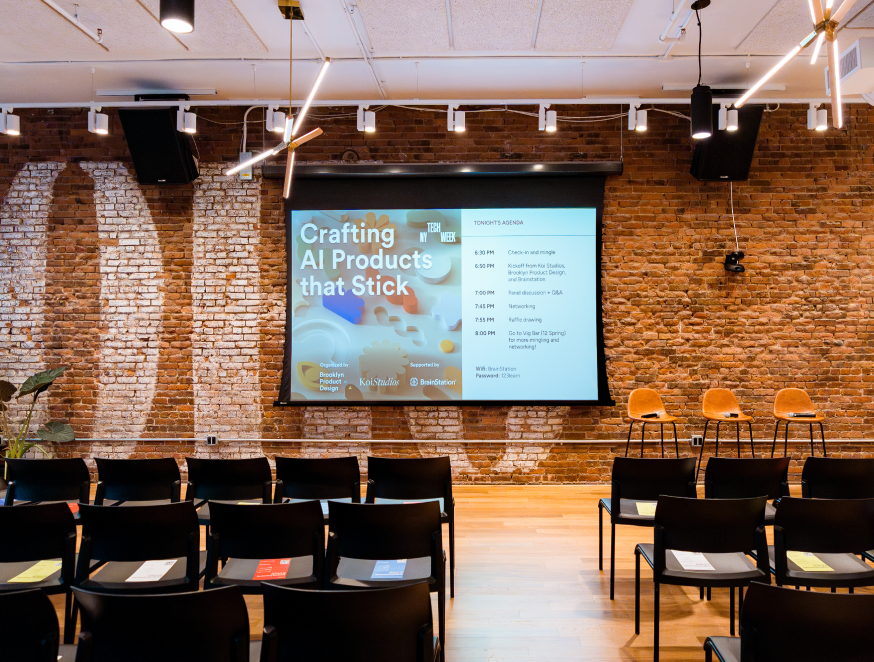Product Strategy
July 8, 2025

What truly makes an AI product stick and not just fade into obscurity? We all know that many companies rushed into AI, eager to integrate the next big thing but often neglect the real-world problems their tech must solve.
We talked about this during our panel event at NYTW. Let’s unpack how to transform AI from a hyped-up trend into a user-centric solution that becomes a part of everyday habits.
It starts with a simple truth: successful AI products solve real, recurring problems. While this might sound obvious, it’s a crucial reminder. Many products in recent years were built on tech excitement, not genuine user needs. Let’s take a tip from the transcript: aim to solve a specific, useful problem rather than chasing the big, shiny AI dream. This might mean focusing on one feature that your users need rather than trying to outdo chatbots or generative AIs like ChatGPT. Here’s what to focus on:
Where can AI make the biggest difference today? Stepping into areas where AI brings flexibility and handles "fuzzy tasks" effectively can be your first strong move. As discussed in the transcript, AI excels at managing tasks where precision is flexible within certain limits. Suppose you’re building an application that translates broad user descriptions into functions—this is a sweet spot for AI because of its capacity to manage complexity in a way that's both creative yet consistent.
A good place to start is by tackling resource-consuming tasks that AI can streamline, thereby saving precious human hours and allowing your team to focus more creatively on nuanced undertakings. Use AI for mass data analysis and time-consuming manual tasks, leaving the culturally and emotionally resonant decisions to your people.
AI products suffer when users don't trust them. User-centered design should be at the heart of your product development strategy to counter mistrust. There are two main takeaways:
Consider investing AI efforts in sectors primed for substantial impact: climate tech is an excellent candidate. AI's environmental computation will naturally drive demand for smarter solutions, like generating water from power grids or providing insights into deforestation. These potent yet less expected applications of AI illustrate its far-reaching potential.
It's time to think of AI not just as a tech upgrade but as an enabler of important global solutions.
Prototypes and mockups are invaluable. They do more than words ever could—making the abstract concrete and thereby spurring excitement among stakeholders. Encourage your teams to use prototypes as focal points for discussions to drive precise, need-based product improvements.
To thrive in the long-term, AI products must be designed with intentionality and care—ensuring that solutions are both habit-forming and genuinely helpful. At Koi Studios, we weaving together robust, user-centric designs that make tech work for people—not the other way around.
Interested in building the next impactful AI product? We'd love to chat.
Related articles
KoiStudios
KoiStudios